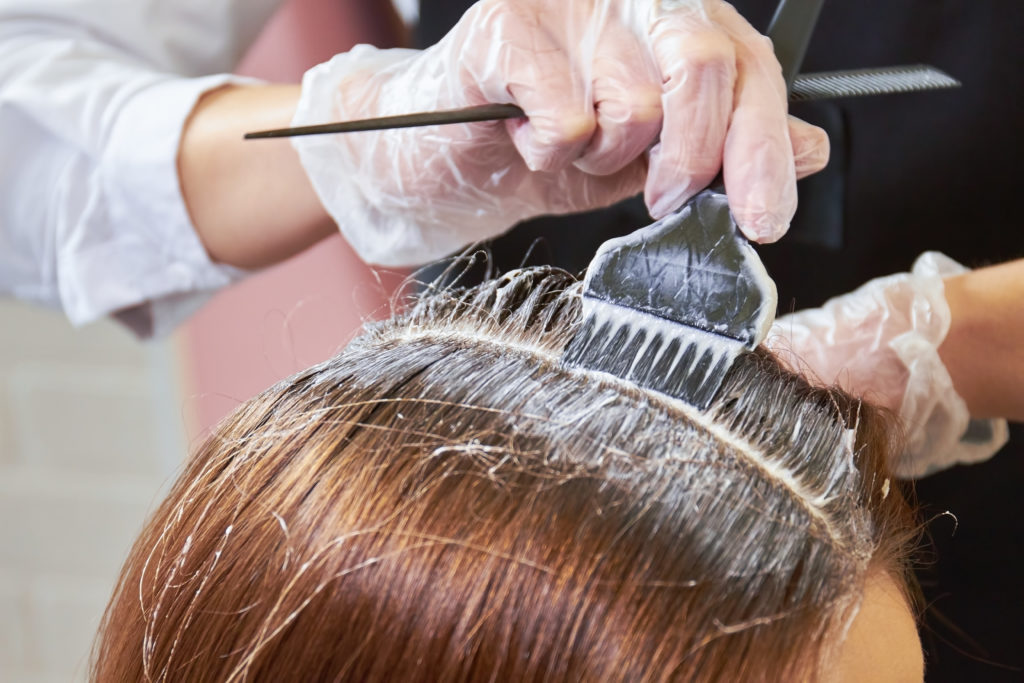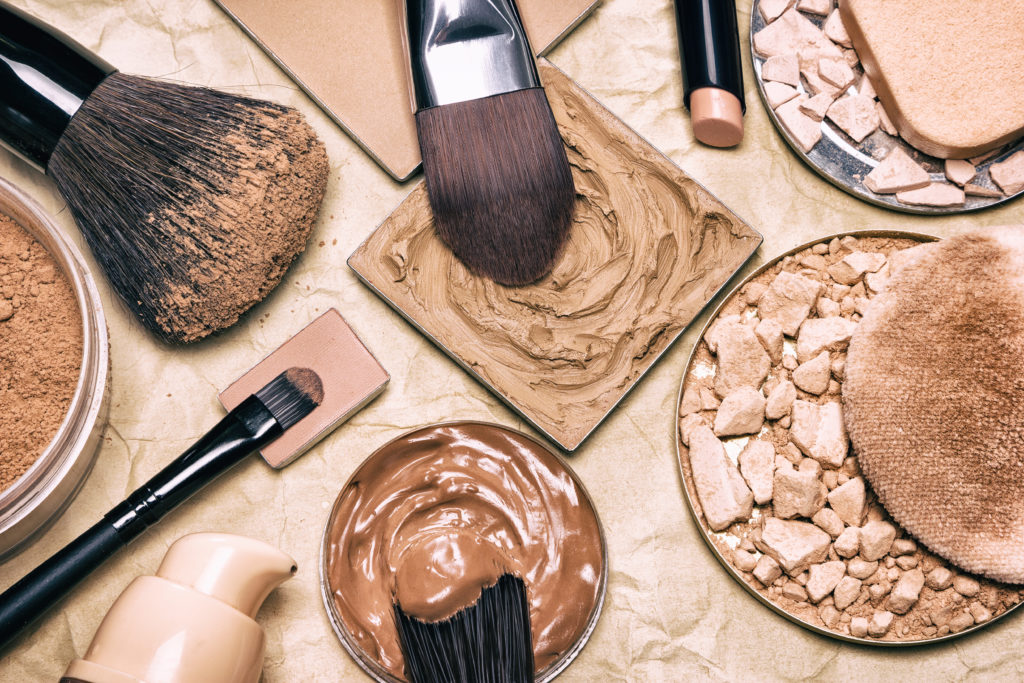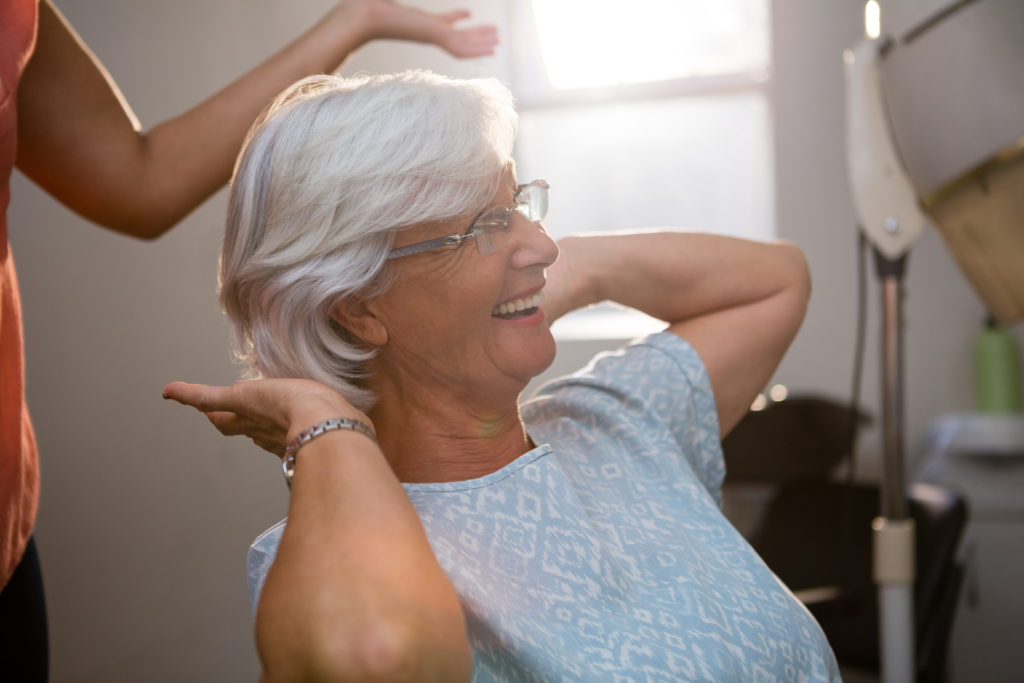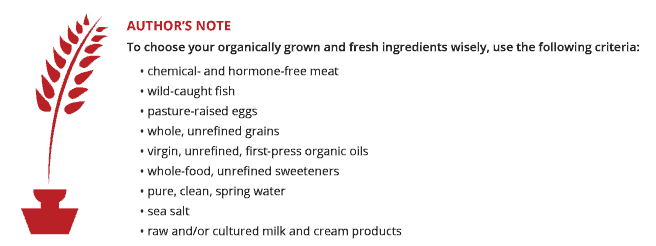A shocking statistic: In his book Dying to Be Beautiful, Peter Lamas cites a statistic from the National Cancer Institute estimating that 20 percent of cases of non-Hodgkin’s lymphoma among women may be associated with commercial hair dye products. This is the same type of cancer that claimed the life of Jacqueline Kennedy Onassis, who, along with being a heavy smoker, dyed her hair for decades.
Personal note: The unfortunate part of this statistic is that even so-called natural hair coloring can also lead to serious health issues!
A recent visit with a close friend whose daughter is experiencing swelling on one side of her face and neck prompted me to write on this subject. This young lady was also tired and depressed much of time, and at only twenty-three, I knew her symptoms were indicative of something serious. Although regular good family meals are served, I learned her personal choices included sugary drinks, processed snacks, and other quick and “convenient” junk foods, I suggested she go on the Standard Process 21-Day Purification Program and a full overhaul of her diet.
I also called Standard Process mentor Lynn Mayer, CNC, for further suggestions. She immediately advised me to hold off on the purification program until the client had filled out two questionnaires—the Toxicity Questionnaire and the Symptom Survey Questionnaire—to help determine her toxicity level and the exact organs that might be in distress. Both are available from Standard Process holistic practitioners, or from your own chiropractor, naturopathic doctor, or other providers that carry Standard Process.
Mayer reasoned that if an individual’s toxic levels are too high, they’ll first need to go through a less-rigorous detox program before the 21-day cleanse from SP. Following Lynn Mayer’s advice, this young woman filled out the questionnaires. Reviewing them with Lynn was one of those jaw-dropping moments that most holistic practitioners will experience only a few times in their careers!
The outcomes were almost difficult to believe. She was four times more toxic than normal, and most of her internal organs, including her liver, spleen, and gallbladder, as well as her hormones and lymphatic system, showed a substantial decrease in proper functioning. Lynn turned to me and asked, “What in the world is she eating?”
I invited both the mom and the young lady over to view the results. When they walked in, the very first thing I noticed was the excessive amount of makeup this young lady was wearing. The black eyeliner was spread thick and heavy over and under her eyes, and her once-beautiful auburn hair was dyed a deep black. I intuitively felt that her toxicity level was even more about cosmetic poisoning than her fast-food choices.
As we reviewed her results, I could see that both mom and daughter were incredulous. The young lady had a questioning look at my assessment, especially the fact that I put the negative test results squarely on the makeup. I could see from her expression that she seemed to be thinking: Yeah, but how can hair coloring and makeup have anything to do with my low energy and depression, the swellings in my face and neck, and the other serious organ dysfunctions the questionnaires revealed?
My heart went out to her. I knew that under all that heavy makeup was a very attractive and intelligent young woman. And I couldn’t help but wonder why so many women of all ages want to punish their bodies with these poisons.
Following are some interesting facts from Dying to Be Beautiful, along with some of my suggestions for a more natural, healthier, and longer life. Just remember, your cosmetics may kill you.
How These Chemicals Affect Your Body
In Dying to Be Beautiful, Peter Lamas details how sixty-five of the most commonly used chemicals enter the bloodstream and cause such devastating damage. Since listing all of them is impossible in this short blog post, I’ll just mention a few and strongly suggest that this small book is well worth the small price. Personal note: I haven’t used any Peter Lamas cosmetics, so I cannot personally condone them. I’ll leave that to your discretion and provide some nontoxic recommendations below.
Commonly Used Chemicals in Your Favorite Cosmetics
Acetone: This strong solvent used in nail polish remover is listed as a hazardous waste by the Environmental Protection Agency. It’s often cited as a central nervous depressant through inhalation, which may also result in dryness of the mouth and throat, dizziness, slurred speech, and drowsiness. If you experience any of these symptoms after visiting a nasty-smelling nail salon, you may want to ask yourself if your polished nails are really worth it.
Alkyl-phenol-ethoxylates: This chemical is likely in your favorite foamy shampoo. It’s been found to reduce male sperm count and mimics estrogen in your body. Additionally, it’s considered toxic and carcinogenic.
Aluminum: Used as a color additive in many cosmetics, especially eye shadow. You’ll also find it in deodorants and antiperspirants, which are applied to the upper body and have a direct effect on the lymph glands. Aluminum is listed as a carcinogenic and has also been found in high amounts in Alzheimer’s patients.
Coal tar: This chemical is primarily used in shampoos and hair dyes and is also marketed under the name of FD, FDC, FD&C color. It’s known to be carcinogenic and may cause nausea, lack of concentration, and nervousness. It can also trigger asthma and headaches.
Finding Nontoxic Cosmetics
I’m not sure how many of you have studied toxic cosmetics, but I can tell you that in my research almost 100 percent of companies claimed their cosmetics are made with “natural products.” However, if you read the ingredients you quickly find they’re anything but natural or safe. There’s no legal FDA definition for either “natural” or “organic,” so cosmetic companies may make these claims whether they’re true or not.
However, according to the Weston A. Price Foundation, the cosmetic company Beeyoutiful presented their wares at two Wise Traditions conferences. It’s my understanding that participants at these conferences are vetted and may only attend if their products meet certain holistic criteria.
Nevertheless, regardless of who recommends safe cosmetics, it’s ultimately up to you to look at the ingredients and be sure of your facts. A good place to search is the Environmental Working Group’s Skin Deep Product and Ingredient Database.
A Suggested Protocol to Slowly Detoxify
The following is merely a suggested protocol, but it’s the approach we came up with to help the young lady I mentioned earlier in this blog post. We all have our own unique physiology, so it’s best to find guidance from professionals who understand your distinctive issues and needs. Your medical doctor or holistic practitioner should be intimately involved in your specific protocol.
We first asked for her consent to put her on whole food Standard Process supplements. We then suggested a few other easy but important practices that would start diluting the excessive toxic substances in her body. These practices included:
1) increasing her intake of spring water to four ounces every hour until she had consumed approximately 64 ounces per day (or whatever portion of that amount she could comfortably consume);
2) removing all sweetened beverages and foods with added sugars from her diet; and
3) taking a brisk but not fast thirty-minute walk daily, and if possible walk long enough to break into a sweat. (Read why sweating is important here.)
I then had her contact and see an expert kinesiologist Dr. Joe Givan for a complete assessment and spinal adjustment. After ascertaining which supplements would best meet her needs, he determined she needed to take twenty Catalyn tablets per day. But after just a week, she was down to only seven per day! That’s a huge improvement.
I also coached her and her mother on Nourishing Traditions (NT) foods and diet. And now I’m happy to report that the family has started to see a 180 turnaround. As for the cosmetics, I shared the link to Beeyoutiful and recommended that she subscribe to Herb Quarterly and make some of the many great cosmetic recipes they provide, and start making most of her own cosmetics. It’s yet to be seen if she can break away from the commercial junk. However, as we all know: You can lead the horse to the water, but you cannot make him drink. All that can be done is being done—and maybe, just maybe—we’ll have a future Standard Process practitioner in a few years.
Many of us prefer to simply go au naturel with our approach to cosmetics. Perhaps it’s not quite as popular, but it’s definitely less expensive and much healthier. One of my favorite methods, besides concocting my own cosmetic recipes with safe ingredients, is to use the beauty recipes in Herb Quarterly.
The Spring 2014 issue of Herb Quarterly features a whole section of wonderful homemade cosmetics exclusively for men! That’s something we don’t often see or even think about since cosmetics are generally thought of as feminine. They sell past copies on their website.
The Best Food for Natural Beauty
Oh yes, let’s not forget the one great food that gives us a healthy glow, supports our muscles (including facial muscles), and, most importantly, keeps our skin as wrinkle-free as nature allows. Plus this food makes the perfect base for your favorite soup. This one ingredient is better than any cosmetic you’ll ever use.
I’m talking about collagen-packed bone broth, of course. For a list of food sources that provide collagen-forming nutrients, read one of my favorite blog posts: “Help! My Body Is Getting Flabby.”
Supernatural (or Should I Say Heavenly) Recipes
The recipes below come with permission from Janice Cox. Among other things, she writes great beauty articles for Herb Quarterly, and I highly recommend her informative book Natural Beauty at Home.
Plant-Based Lip Balm
Janice states that these oils make great substitutes for beeswax or lanolin to soothe dry, cracked lips.
Ingredients
1 teaspoon castor oil
1 teaspoon coconut oil
1 teaspoon shea butter
½ teaspoon cocoa butter
1–2 drops peppermint essential oil, for flavor (optional)
Instructions
- In a heat-resistant bowl or small saucepan, combine all ingredients and gently heat until melted. (You can do this in the microwave, but be careful not to boil the mixture.)
- Stir well and pour into a small container. Let cook completely. To use: Spread on your lips with a clean fingertip. Yields 75 ounces.
Coconut Oil Body Polish
Janice says this recipe is great for skin that needs exfoliation and a bit of TLC.
Ingredients
1 cup raw sugar
½ cup coconut oil
½ teaspoon vitamin E oil
2–3 drops essential oil (lavender, rosemary, peppermint)
Instructions
- In a small bowl, mix together all ingredients and stir well. Spoon into a clean container.
- To use: standing in the tub or shower, massage the mixture into your skin. (Be careful as the oil can make the tub slippery.) Rinse with warm water and pat your skin dry. Yields 8 ounces.
Avocado Facial Mask
According to Janice, the natural fat and protein in this recipe will help stimulate your skin’s natural production of oil. Personal note: This also makes a great little spread on your sourdough bread. (Smile)
Ingredients
½ fresh avocado, mashed
1 tablespoon fresh parsley leaves, finely chopped
1 teaspoon fresh lemon juice
Instructions
- Combine all ingredients in a small bowl and stir well until you have a smooth, creamy mixture.
- To use: Spread the mask on a clean face and neck and let sit for 15 minutes (take a moment to relax while you wait). Rinse with warm water and gently pat your skin dry. Yields 3 ounces, enough for one treatment.
Afterthoughts from the Traditional Cook
Is there a physiological component in our quest to be beautiful? After giving much thought to the young woman who tried so desperately to achieve beauty through hair dye and all sorts of other chemicals—to such a degree that they made her sick—I can’t help but wonder about our general ignorance of how dangerous these toxic chemicals are and why that is. In my humble opinion, I think one reason could be that many of us just don’t think we’re very pretty!
It seems we don’t take into account the grace of God as he creates us in the womb. Now, you might say, Huh? But think about it for a spell. If we truly loved ourselves as we were meant to, we wouldn’t want to slather our bodies with piles of junk or change the color of our natural hair, regardless that we just don’t like its color or that it turns as we age.
Who are we trying to fool? Maybe it’s more about looking like who we aren’t, or maybe we’re harboring a little self-hatred so we subconsciously change the outside when we should be looking on the inside for real change.
It seems to me that if we truly loved who we are, we wouldn’t need excessive adornments. We’d be happy just to be healthy and whole. Why not turn the page and allow yourself to look beautiful with a few simple, safe cosmetics or even none at all. Allow your hair to turn naturally into what it’s meant to become, even if it means a few gray hairs.
Maria Atwood, CNHP
[xyz-ihs snippet=”End-Authors-Note”]Note from Maria: I am a Certified Natural Health Professional, CNHP, not a medical doctor. I do not diagnose, prescribe for, treat, or claim to prevent, mitigate, or cure any human diseases. Please see your medical doctor prior to following any recommendations I make in my blogs or on my website.
Images from iStock/AntonioGuillem (main image), Denisfilm (hair dye), pogrebkov (makeup), Wavebreakmedia (woman).





